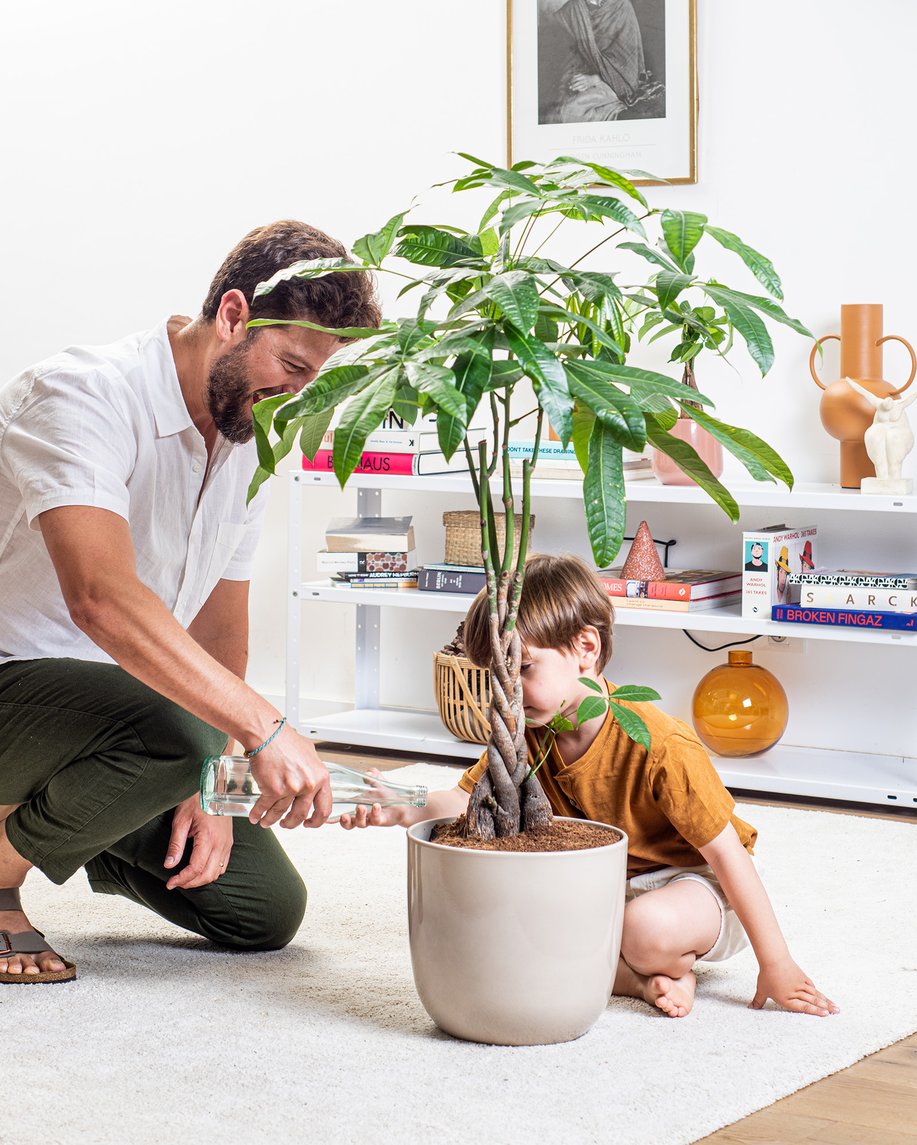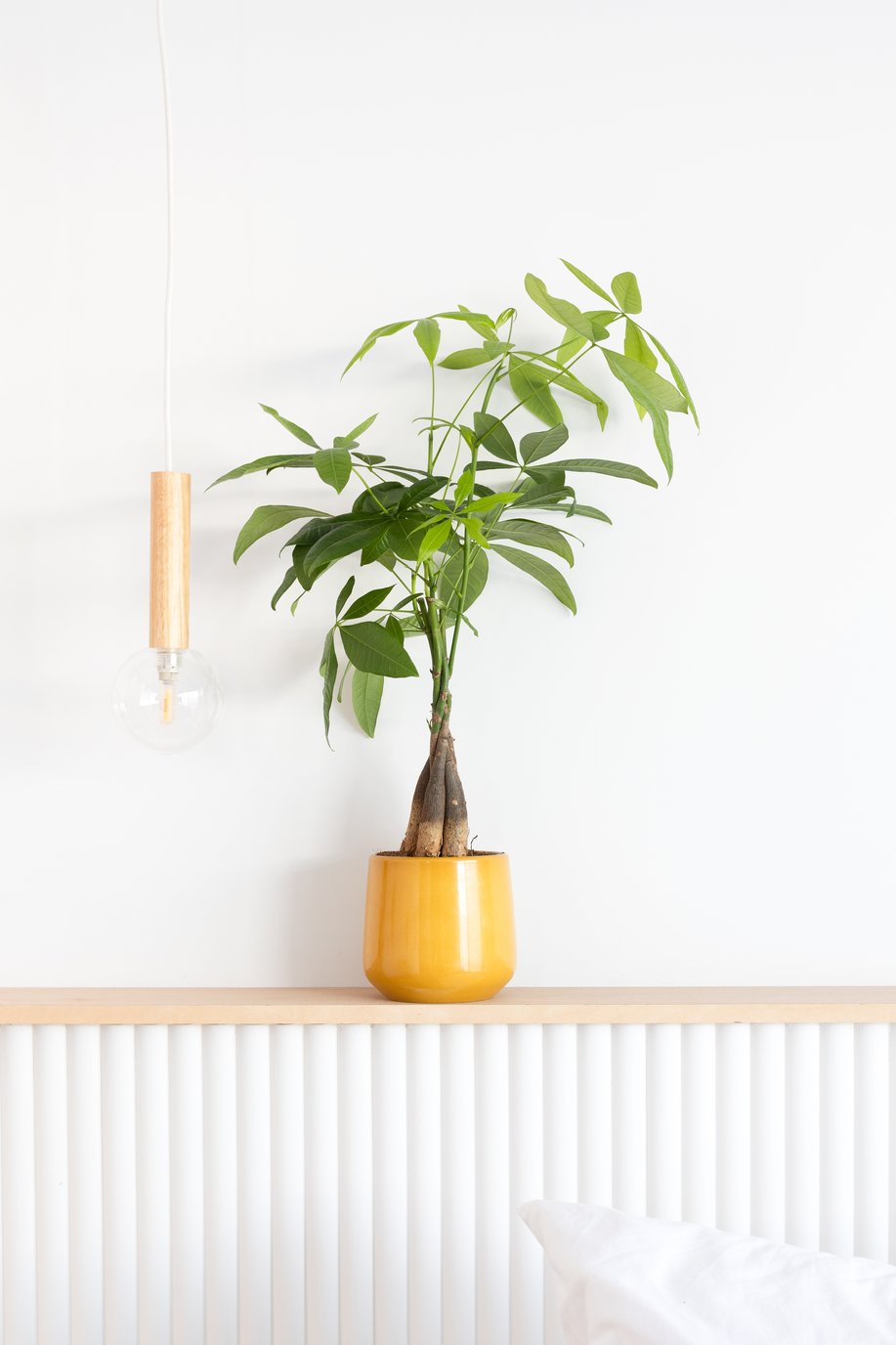3 Common Money Tree Problems and How to Solve Them
The Money Tree is native to Central and South America and has become among the most attractive, easy-to-care-for houseplant thanks to its hardy nature. While it’s heartbreaking to see these beauties get sick, even plant experts can make mistakes when it comes to watering, light, humidity, and temperature.
Some of the most common Money Tree plant problems are yellowing or browning leaves, stem softening, and leggy growth. That being said, there are often very clear explanations for these issues and simple solutions to bring your beloved plant back to health! Read through this article to learn exactly how to deal with common Money Tree problems.
Problem: Overwatering your Money Tree
As new plant parents, we are often guilty of becoming a bit too eager to keep our Money Trees healthy that we often wind up overdoing it. Unlike us humans, when a plant is overwatered, it’s not able to process the water fast enough, so it winds up sadly sitting in that damp soil. That’s why overwatering your Money Tree is one of the most common mistakes, which unfortunately can cause root rot and eventually suffocate the plant.
When your Money Tree receives too much water, its root system and leaves will stretch out, causing those beautiful green leaves to brown and fall. Luckily, while Money Tree overwatering is an easy mistake to make, it's an even easier one to correct.
How to Identify
The good news is that there are clear ways to stop this from happening. What does an overwatered Money Tree look like? Typically, those vibrant leaf colors you know and love will suddenly look brown and sad. This is often your Money Tree trying to send you a message that it’s been given too much water.
Solution
Typically, the best way to avoid overwatering is by sticking to a clear schedule and making sure your plant has a good drainage system.
That being said, the absolute easiest way to ensure you get it right each and every time is with easyplant. easyplant’s self-watering pot makes watering your Money Tree extremely simple and stress-free. All you have to do is fill the easyplant reservoir once a month, and you’re all set!

Problem: Stressing Out Your New Money Tree by Moving It Around
Like most of us, Money Trees don’t do great with change. When these lovely plants are put in new environments, they typically go into a bit of a shock. That means that if you recently purchased your Money Tree or just received it as a gift, the plant has likely been carried around and transported, putting it into survival mode.
How to Identify
As long as you’re checking in on your plant, you’ll surely be able to quickly identify if it's feeling stressed. When Money Trees are moved or introduced to a major change (like a new location or a cold draft), they react by scaling back growth, dropping some leaves, and focusing on their roots. So, if you start noticing your plant’s growth slowing or leaves starting to drop, it’s likely a sign that your plant is feeling stressed.
Solution
It sounds alarming to know your plant is in shock, but luckily there’s an easy solution to a stressed-out Money Tree: let it be. Don’t put the plant through any more changes or try to diagnose the problem too soon. Allow things to settle for a few weeks without any new introductions like more water, new fertilizer, or sudden movements. More often than not, your Money Tree simply needs some time to adjust after that initial shock and will soon return to its healthy self.

Problem: Placing Your Money Tree in Wrong Light
As a new plant owner, you likely want to find your Money Tree the absolute perfect spot to make it feel at home. And you’re right to take this part seriously – placing your Money Tree in a location with the wrong light is a big mistake and can really impact your plant’s growth. Too much light can cause the leaves to yellow and brown, and not enough light can cause the plant to become leggy, growing in odd ways that are hard to sustain.
When the latter happens, in addition to looking unattractive, it’s also a health issue because when your Money Tree grows taller and skinnier than it should, it could wind up having a hard time supporting itself. This can cause the plant to droop, break, or sadly wither away.
How to Identify
Plants naturally grow toward the sun and will adjust the direction of their growth to get more light when they feel they need it. So if you notice your plant’s trunk or the small stems that connect the leaves to the trunk becoming unusually long and skinny, it’s likely a sign that your plant is lacking light.
Additionally, many plants use their leaves to communicate important information about their health. Just as in our world, yellow signs mean “caution,” so do yellow leaves on your Money Tree. A yellow leaf here and there is nothing to worry about, but several yellow leaves at once are a pretty sure indication that something is wrong. If you start to see your plant’s leaves yellowing, it could be due to excessive sunlight. While Money Trees thrive with bright, indirect light, they cannot tolerate the full strength of the sun’s rays on their foliage, so yellow leaves are the cautionary precursor to burnt brown.
Solution
When the problem is a lack of light, move your Money Tree to a brighter location with plenty of filtered sunlight as soon as possible. Remember that direct sunlight can scorch the leaves, so avoid any spots lacking diffusion. If you can’t find a good area in your home with bright, natural indirect light, consider adding some artificial light.
When the issue is too much light, simply move your plant to a new location where it won’t receive direct sunlight on its leaves. This could mean placing it in another room or simply pulling the plant further into its current room away from the window. Just keep in mind that any change in the environment can stress your plant, so do your best to move your Money Tree slowly in order to help ease it into its new home.
Find your new money tree at easyplant
While Money Trees do require love and care, they are highly resilient plants that can bring life to any space. And legend has it that it’s one of the luckiest ornaments, symbolizing prosperity. Its trunk is believed to hold good fortune within its folds, and its palmate leaves resemble open hands, which many believe offers great abundance.
If your plant starts to show signs that it may not be healthy, don’t panic. Simply follow the steps above for the best chance to bring your plant back to full recovery.
Order your own self-watering Money Tree for ultimate ease. For more information on how to care for the plant, visit our Money Tree Care page.